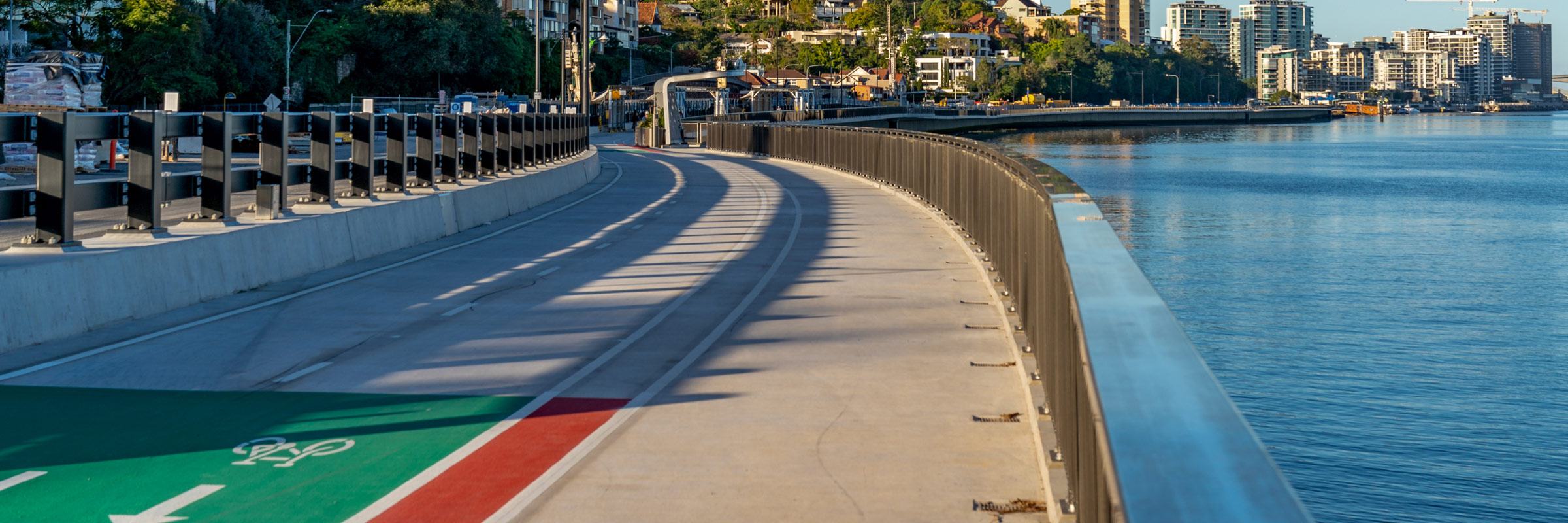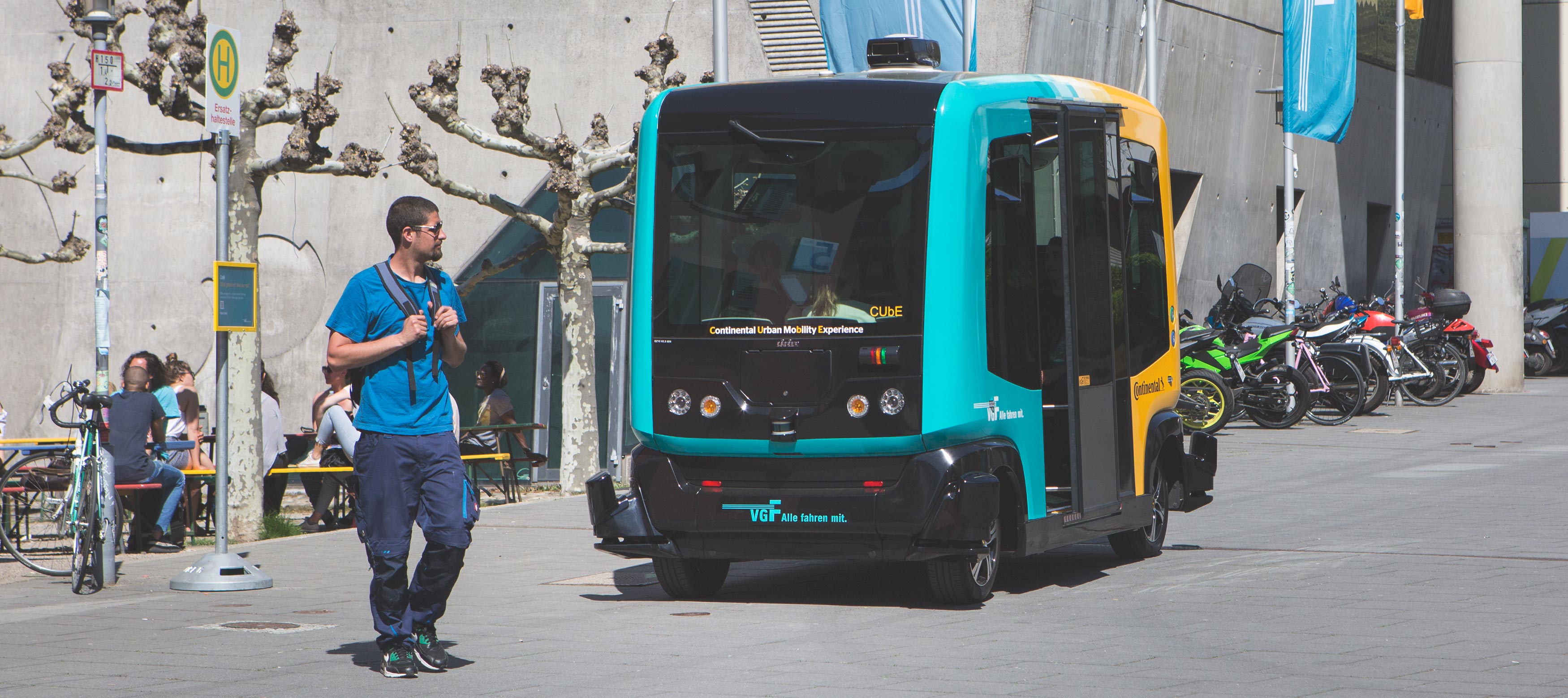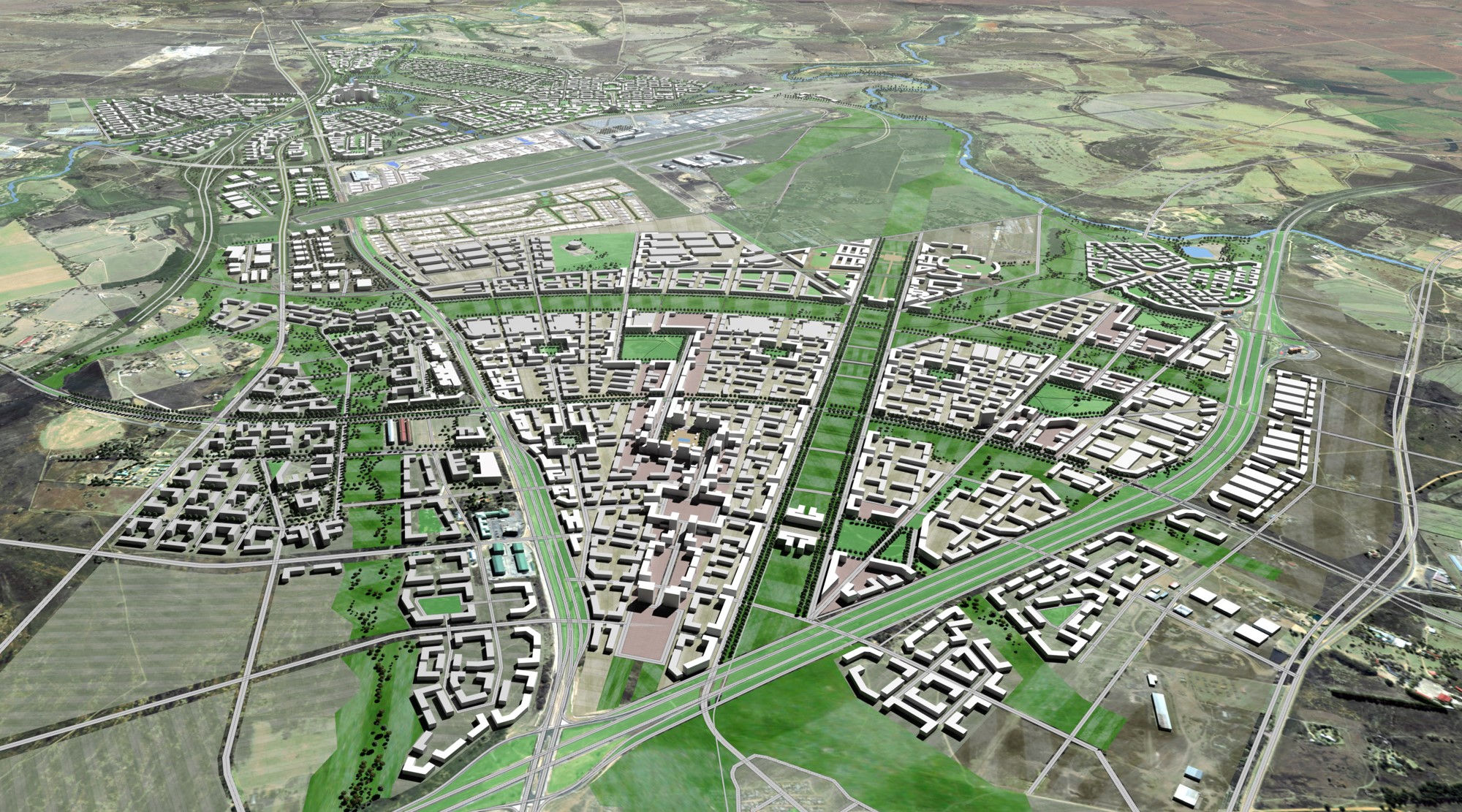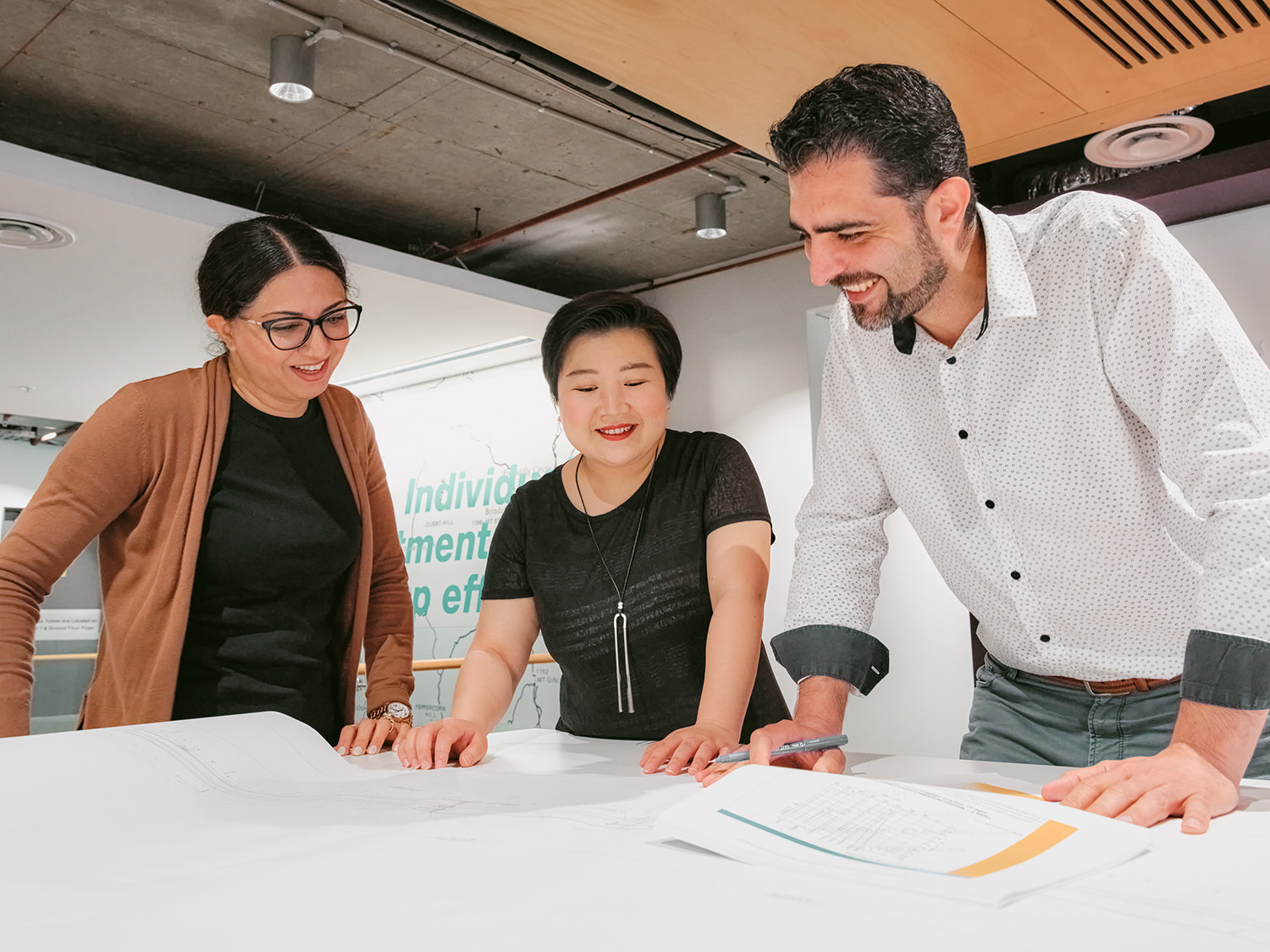
Local experience and strong collaboration key to success
Chris Demartini was SMEC’s Design & Construction Manager for the Independent Verifier throughout the project and transitioned to the Independent Verifier’s Representative for the completion works.
As the Independent Verifier (IV) for the design and construction of the Kingsford Smith Drive Upgrade, SMEC’s role was to independently verify that the Design and Construct (D&C) Contractor complied with the Project Deed requirements. SMEC was well positioned to provide our client with experience, capability and knowledge with many of our team members having worked on other major Brisbane City Council projects including the Clem 7 and Legacy Way tunnels.
“In a verification role, stakeholder relationships are the key to success. We are often dealing with difficult issues that can have significant impacts on the Contractor’s program and budget. It is important to be able to maintain positive relationships with both Contractor and Principal so these issues can be pragmatically worked through to develop, where possible, win/win solutions,” explains Chris.
“One of our unique capabilities has been to provide our client with a trusted advisor to help navigate the challenges which naturally present themselves in projects of this magnitude. Some of our specialists have worked with other major Council projects and have established a trusted working relationship with the client. Many situations involve proposed solutions outside the normal specification requirements and our advice is often sought and well regarded.
As the IV providers SMEC are in a role which facilitates and aligns the objectives of the client and contractor. Chris said, “We are there to ensure that quality, durability and contractual requirements are met while balancing this against the contractor and client needs to remain on program and within budget.”




Unique challenges solved together
There were numerous and significant challenges on this project, with many relating to the unique and difficult geotechnical conditions. These included very soft soils, steeply sloping rock profiles including paleo channels, an unstable riverbank and areas of highly fractured and variable strength rock.
Chris was incredibly proud of the team’s collaboration and expertise in providing solutions, “A number of these challenges arose particularly with the piling and the ground improvement works. Significant temporary works were required, and unique piling methodologies adopted to overcome the difficult ground conditions and allow the project to continue. The IV team was able to collaborate with the Contractor and Principal in the development of solutions to these issues and assess design, durability and verification risks. The extent of ground movements and their effects on the constructed works was also a challenge that needed to be overcome and required timely input from the IV team and SMEC’s technical specialists, said Chris.
SMEC’s breadth of technical specialists meant that we were able to be incredibly agile and responsive to our client’s needs. “We were able to draw on the expertise of people like Andy Law and Ken Ross. Andy is a Chartered Geologist and Engineer with 35 years’ experience in geotechnical engineering. He has global expertise and is a published specialist in the fields of site investigation, piling and ground improvement and is currently on the QLD Committees of the Institution Civil Engineers and Australian Geomechanics Society. Ken is a highly regarded structural engineer with over 50 years’ experience and has led the design of many major bridges and structures around the world. Specialists like Andy and Ken, in collaboration with the contractor, our client and our team of contract administration professionals was key in finding effective solutions,” explained Chris.
Continuing the transformation on Brisbane Metro
As completion activities on Kingsford Smith Drive wind down, we are now well into the next Brisbane City Council major project in the role of Project Verifier for the Brisbane Metro.
Brisbane Metro is another city shaping project providing a high-frequency, high-capacity public transport system that will better utilise existing busway infrastructure. The Brisbane Metro Project consists of upgrades to 21km of existing busway connecting 18 stations. The aim of the project is to reduce congestion, create a turn up and go public transport system, reduce emissions with cleaner and greener all electric vehicles and create 2600 design and construction jobs.
The project supports a new fleet of 60 battery electric metro vehicles with zero tailpipe emissions, saving an estimated 50,000t of greenhouse emissions over 20 years. The all-day electric operation has flash charging in under six mins at end of route. The Bi-articulate design; provides three spacious passenger compartments, three large double doors for quicker boarding, Low-floor design for a high level of accessibility and three large mobility aid bays with automated on-request ramp access. The vehicles have capacity for 150 passengers in comfort and 170 in event mode.
“SMEC’s established verification team is drawing on decades of experience to help deliver the community benefits anticipated from projects such as these. The team is ensuring the Brisbane Metro project is delivered to the state-of-the-art specification requirements and providing the quality infrastructure that the community and other stakeholders expect. We are incredibly proud to help continue to transform our transport network to meet the future demand in a sustainable and conscious way,” said Chris.
Related
insights
 70 Years Forward: A fork in the road
70 Years Forward: A fork in the road
Engineers need to be thinking about how to cater for a new wave of transportation that’s coming to our roads: autonomous cars. David Freer, Technical Principal Transport Planning, explains why it’s not as far off as we think, and why we need to be future-proofing our roads.
 Designing tomorrow’s sustainable cities: Lanseria Smart City
Designing tomorrow’s sustainable cities: Lanseria Smart City
The Greater Lanseria Master Plan (GLMP) is the first stage in the development of the new Smart City in Lanseria (Gauteng Province), as announced by South African President Cyril Ramaphosa in his 2020 State of the Nation Address. Following the announcement, a joint initiative led by the Gauteng Office of the Premier was formed to undertake extensive studies and engagements for the planning of Lanseria Smart City.
 Q&A with Colin Vaughan – Preserving Australia’s unique biodiversity
Q&A with Colin Vaughan – Preserving Australia’s unique biodiversity
Australia is renowned for its diverse ecosystems, made up of distinct and varied flora and fauna. Approximately 93 per cent of flowering plants in Australia are not found anywhere else in the world(1). Therefore, balancing national development with the protection of Australia’s unique biodiversity is crucial to a more resilient, sustainable future.
 People are our greatest investment in the future
People are our greatest investment in the future
As we kick-off 2022 we are looking to the future. Australia is experiencing unprecedented investment in infrastructure and to successfully deliver these projects with innovation and foresight for integrated sustainability there is one thing which is at the core – OUR PEOPLE.




